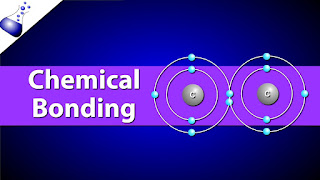Applications of 1, 4 Dioxane
 |
| Applications of 1, 4 Dioxane |
1,4-Dioxane is a synthetic industrial chemical which is
complete dissolves into the water. The synonyms include Dioxane, Doixan,
P-dioxane, Diethylene Oxide Diethylene Ether and Glycol ethylene ether.
1, 4-Dioxane is found
in groundwater in the USA. The physical and chemical properties and behavior of 1, 4-Dioxane is
highly mobile and does not readily biodegrade in the environment.
1, 4-Dioxane is a likely contaminant at many sites with
certain chlorinated solvents. It is flammable liquid and a fire hazard. If
exposed to light or air it’s dangerously explosive. Is also used as a
stabilizer in certain chlorinated solvents, paint strippers, greases, and
waxes. The short term exposure of 1, 4-Dioxane may cause eye, nose and throat irritation. Long
term exposure may cause kidney and liver damage.
1, 4 Dioxane is highly popular solvent with a polarity index
of 4.8. It is more popular than ethyl acetate and also extra polar than methyl
ethyl ketone.
Dioxane is used in many varieties of processes and products.
Dioxane has been used mainly as a stabilizer in chlorinated solvents mainly for
1, 1, and 1 –trichloroethane.
Stabilizers scavenge hydrochloric acid produced by the
hydrolysis of solvents and oils. It prevents degradation of the solvent.
Dioxane has been added to many grades of TCA say around 2 to 3 % by volume.
Dioxane becomes concentrated in vapor degreasing wastes because of its boiling
point. Dioxane produced in the USA was used a chlorinated solvent stabilizer
and this application continues to be great even today. The applications of
1, 4-Dioxane is widespread. It’s used in paint and varnish
strippers as a wetting agent and aspersing agent in textile processing, dye
baths, stain and printing compositions, and in preparation of histological slide.
In deodorants, fumigants, automotive coolant liquid, and scintillation counters. It’s
also used as a surface treating agent or artificial leather.
Dioxane is even majorly used as a solvent and solvent stabilizer
in the manufacture and processing of a paper, cotton, and shampoos. The
The physical and chemical properties of dioxane 1, 4 is
usually the perfect mobile contaminants at solvent release sites and the
footprint of dioxane plume may be large then the plume. dioxanes properties
favor its existence in water, not on soil water or air. Volatilization from water is
The only attenuation processes that apply to dioxane are
dilution, dispersion, and to a limited degree, volatilization (Brown and
Robinson, 2004). CDC (2004) notes that dioxane does not undergo significant
biodegradation in wastewater treatment
Dioxane is theoretically volatile enough and needs to be
removed using soil vapor. Extraction even though its vapor pressure is lower
than that of many VOCs, dioxin will tend to partitions into the soil pore water
in the vadose son and the system needs an exercise.
1 .4 Dioxane suppliers in India, has properties which favor
is the currency in water, not soil. It’s best in water not in the air. Always it is known
that water is a slow process and when 1,4 Dioxane enters the atmosphere it rapidly.
The only attenuation processes which apply to Dioxane are dilution, dispersion,
and volatilization.



Comments
Post a Comment